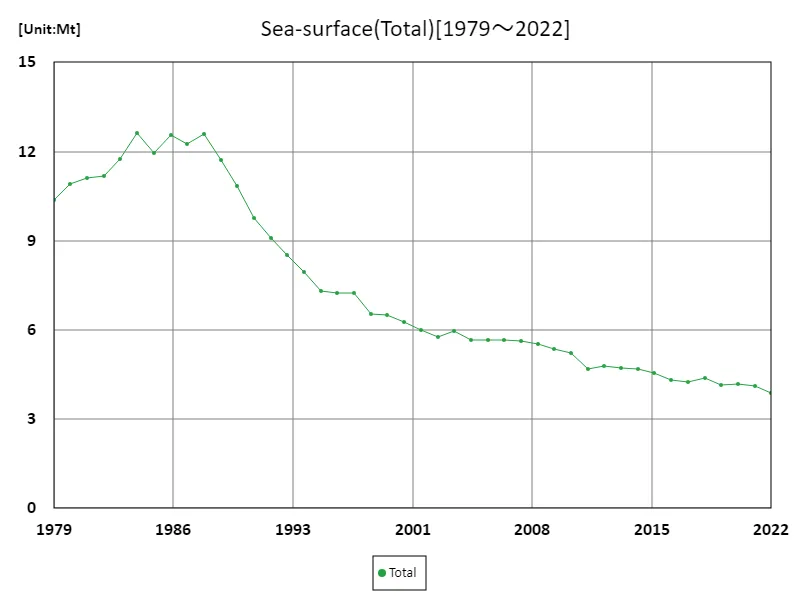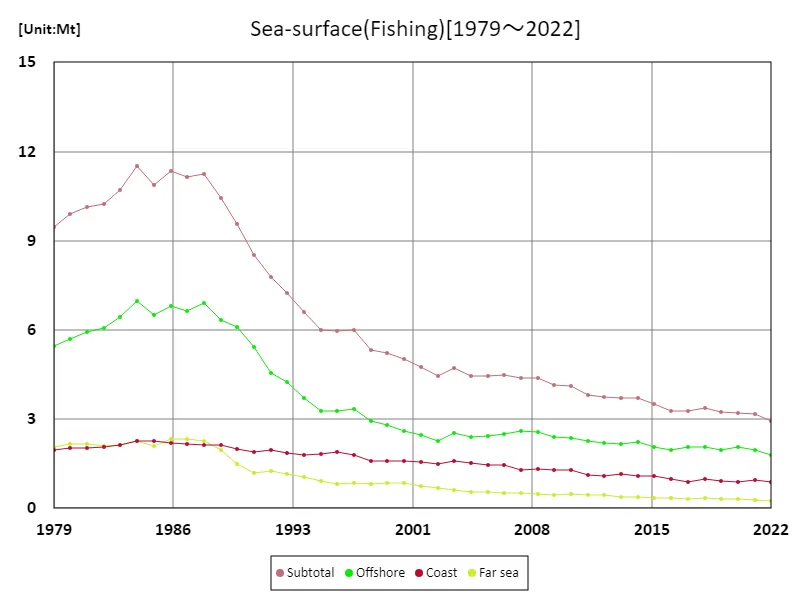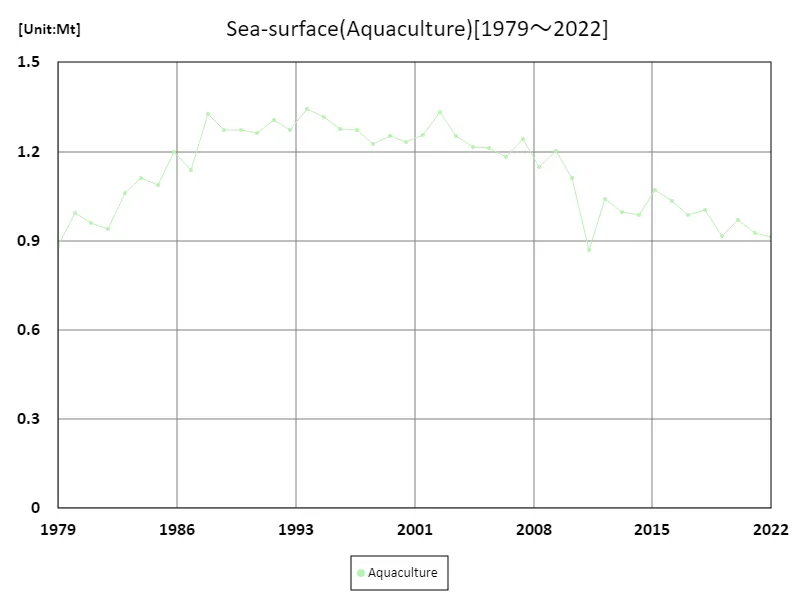Abstract
In Japan, marine fisheries and aquaculture have historically seen fluctuating trends. From peak production in the mid-20th century, the sector has generally declined due to overfishing and environmental changes. In recent years, production stabilized, with the 2022 total at 3.86 million tons. The focus has shifted towards sustainable practices and aquaculture, reflecting efforts to adapt to resource limitations and ensure long-term viability of the industry.
Statistical survey of total marine fisheries production
Since peaking at 12.6 million tons in 1984, Japan’s marine fisheries production has significantly declined, currently at just 30.6% of that record. This drop reflects challenges like overfishing and environmental shifts. In response, the industry has increasingly focused on sustainable practices and aquaculture to adapt and stabilize production. Despite this reduction, ongoing efforts aim to balance resource management with economic needs, highlighting a shift towards long-term sustainability in fisheries.


The maximum is 12.6Mt[1984] of Total, and the current value is about 30.6%
Marine Fisheries Production Statistics Survey
Since reaching a peak of 11.5 million tons in 1984, Japan’s marine fisheries production has dwindled to just 25.7% of that figure. This decline underscores the impact of overfishing and ecological changes. In response, Japan has emphasized sustainable fishing practices and expanded aquaculture. These efforts aim to stabilize production levels and address the challenges facing the industry, reflecting a shift towards more resilient and environmentally conscious approaches in fisheries management.


The maximum is 11.5Mt[1984] of Subtotal, and the current value is about 25.7%
Statistical survey of marine aquaculture production and fisheries production
In 1979, Japan’s marine aquaculture reached a peak production of 1.34 million tons, a figure that has remained consistent over the years. This stability reflects the sector’s foundational role in Japan’s seafood industry. As marine capture fisheries faced declines, aquaculture’s steady output highlights its importance in meeting demand and supporting sustainable practices. Continued advancements in technology and management aim to enhance productivity and resilience, ensuring aquaculture remains a key component of Japan’s fisheries sector.


The maximum is 1.34Mt[1994] of Aquaculture, and the current value is about 67.9%



Comments